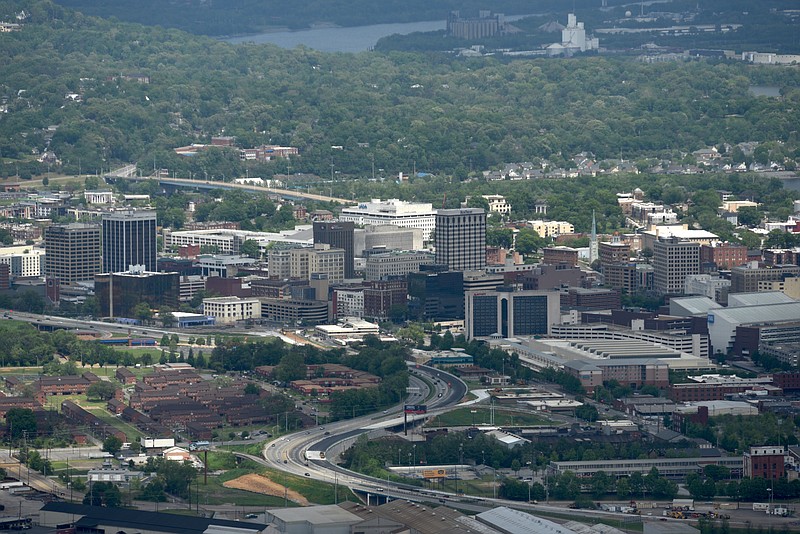More than 30 years ago, our community came together and made a strategic decision to invest in transforming our community's front door - downtown.
This choice led to transformational projects like the Aquarium, the Riverwalk and the Creative Discovery Museum. The transformation continued with the Majestic Theater, The Block, the 21st Century Waterfront and more on the horizon. The decision to focus on creating a vibrant, healthy downtown is also linked to corporate partners such as BlueCross BlueShield of Tennessee, UNUM and EPB making strategic investments as well as VW's decision to choose Chattanooga.
Downtown investment also retained the majority of our business community within the core of our city, employing more than 40,000 people, and is the reason people are moving back to the city to live, not just work.
By the end of 2020, our downtown population will increase 54 percent, from 12,000 to more than 19,000. We've been behind the curve in comparison to other cities like Charleston and Asheville, which have almost 10 percent of their downtown workforce living in downtown. We are at 3 percent and will be at only 6 percent by 2020. Downtown residents pay taxes, go to restaurants, attract retailers such as drug and grocery stores and can choose to walk to work, lessening 8 a.m. and 5 p.m. traffic congestion.
A primary reason for students choosing UTC, in addition to it being a great school, is our downtown. More than 67 percent of its students live outside of Hamilton County, and so far this year freshman applications for the fall are up more than 44 percent.
Another key downtown driver is the growth in tourism, rising to more than $1 billion dollars annually. Ironman, the myriad of marathons, Head of the Hooch and countless conferences are here because of the investment in a quality downtown.
Last year, for the 25th anniversary of the Tennessee Aquarium, we had the opportunity to celebrate the results of those who believed decades earlier that Chattanooga should return to its scenic roots. Five billion dollars in private investment later, the aquarium stands as a reminder of that bold vision.
While the $5 billion figure is impressive, so too is the fact the last billion has occurred since River City Co. released the City Center Plan in early 2014. Empty buildings have been re-imagined and re-inhabited. Empty lots that have provided negligible property tax revenues for more than 20 years are now producing revenue for our public schools and city and county government.
Investments like these have led to the downtown property tax base growing more than 39 percent in the last five years, adding $4.9 million to the city and county tax rolls. The data is clear; investing in our downtown is a great return on investment.
Further, River City Co.'s recent tax analysis shows that downtown investment pays dividends for every Hamilton County citizen.
The downtown Chattanooga footprint contributes more than $7.5 million to county public school funding.
While it is less than one-tenth of 1 percent of the county's geographic footprint, the downtown community contributes almost 4.5 percent of the county's overall property tax revenue.
To put it another way, downtown's urban core of 510 acres contributed $17.6 million in property tax revenue to the city and county coffers. The Hamilton Place mall area of 1,466 acres provided $13 million in tax revenues. Downtown has a combined $34,706 in property tax revenues per acre compared to $8,886 from the Hamilton Place mall area.
The purpose of this study was not to pit one part of our community against another.
Instead, it shows the importance of maximizing the return from the limited opportunities that exist with downtown's small landmass. These are reasons for requiring minimum heights for new buildings with form-based code. There is a need to maximize parking solutions with shared parking facilities and develop surface parking lots. Streetscaping, cleanliness and safety are significant drivers for downtown viability. Projects and investment in assets such as public art, the Walnut Street Bridge refurbishment and the Miller Park District project need continued community backing.
When you look back over the past 30 years and see how far we have come as a community, the contributions of those in the public and private sectors who came together should be remembered. And as we look forward, the investments of time, energy and financial support in downtown need to continue because our downtown isn't and never will be finished.
Kim White is president and chief executive officer of River City Company.
